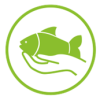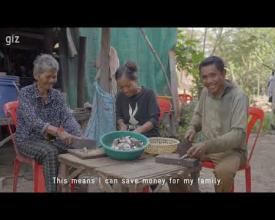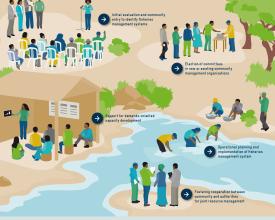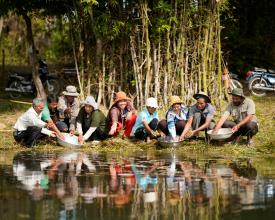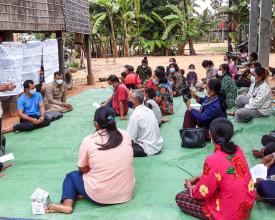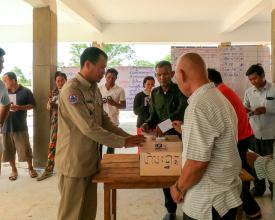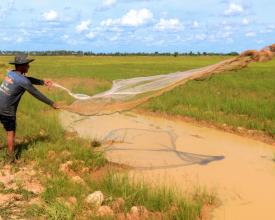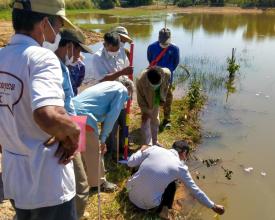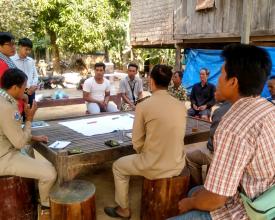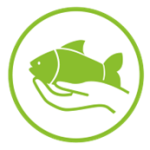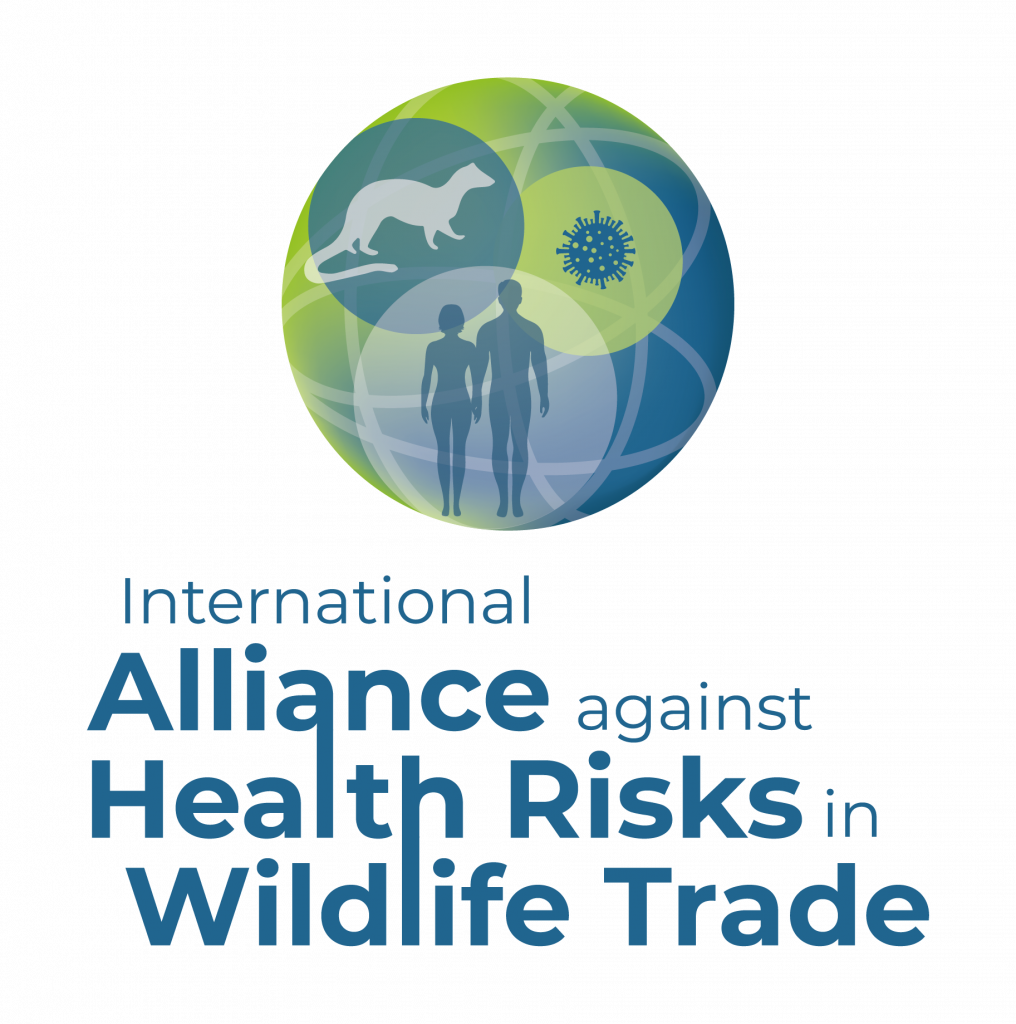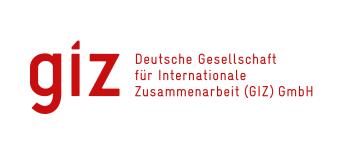
Community-based management: An approach to sustainable growth
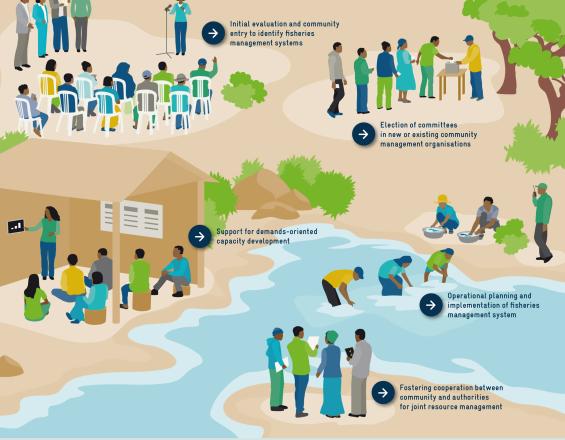
The Global Programme “Sustainable Fisheries and Aquaculture” is implemented by the Deutsche Gesellschaft für Internationale Zusammenarbeit (GIZ) on behalf of the German Federal Ministry for Economic Cooperation and Development. Its aim is to increase the fish supply from sustainable and resource-friendly fisheries and aquaculture, thereby promoting a healthy and diverse diet.
To protect rural livelihoods, it is essential to restore fisheries resources. This requires a holistic approach that includes stakeholder engagement, a variety of skills, time, and other resources, as well as collaboration with other sectors such as agricultural development and water resource management. This solution explores the community-based approach to managing fisheries resources, highlighting the importance of voluntary community involvement. By employing participatory rural assessment techniques, the strategy fosters a strong sense of community ownership in fisheries management, which enhances the availability of fish and boosts income.
Context
Challenges addressed
Main waterbodies such as dams or ponds are inherently shared resources that each member of the community is entitled to use equally. Fishing creates jobs and supports the livelihoods of millions of people in rural regions, particularly in Asia and Africa, while also contributing to a nutritious diet. However, unsustainable fishing practices put fish resources under constant pressure. Local communities suffer because of these careless, continuous practices.
The effective management of fisheries resources is a complex and multifaceted challenge, due to the involvement of a variety of stakeholders at different levels, such as fisherfolk, community members, and local fisheries authorities. It calls for a range of skill sets, time, resources, and policy support. A crucial element in ensuring the durability of these management initiatives is the well-structured and systematic involvement of the community, which in this knowledge product refers to the inhabitants of villages that were supported in managing fisheries resources.
Location
Process
Summary of the process
The central objective in this process is to establish operational committees, and formalized management bodies of water resources which members are elected by the community. They can guarantee not only the durability and acceptance of the approach but also make sure the measures meet the actual needs and circumstances of the community. The committees possess the ability to understand and effectively manage the challenges their community faces, by implementing strategies tailored to the local environment. Many developing organisations partner with these local institutions to carry out their projects aimed at assisting the local population. The major objective is to ensure that the committee has the skills, information, and mindset needed to build a strong ownership and involvement of the locals in the fisheries resource management. It encourages maximum participation and cooperation from all relevant stakeholders, and guarantees that community members have equal access to the resources within the established guidelines. The landscape graphic describes the community entry process, a systematic method to initiate successful and sustainable fisheries management through the election of a management committee and the assistance of existing committees
Building Blocks
Initial evaluation and community entry
Community-based approaches refer to strategies that involve local communities in the management and decision-making processes of their natural resources. In the context of fisheries management, these approaches engage local inhabitants in conserving and sustainably managing fish stocks and aquatic ecosystems. This local involvement helps ensure that fishery management practices are culturally appropriate, environmentally sustainable, and economically beneficial, ultimately leading to improved resource management and community well-being. Such approaches are particularly relevant for small-scale fisheries in natural waterbodies, where community livelihoods are closely tied to the health and productivity of aquatic environments.
The community entry process is a systematic method to initiate successful and sustainable fisheries management by focusing on trust and close cooperations between local communities and other stakeholders. The solution outlines the measures required to establish those cooperations and a fisheries management system through the election of a management committee. Furthermore, the approach assists existing or new established committees, such as dam or community fish refuge committees to develop objectives and activities, an effective administration and monitoring and evaluation system.
As a first step, to evaluate the feasibility of a community-led fisheries management system, it is most important to comprehend the current situation in the community regarding the power dynamics between relevant players, such as local government and community representatives. Going to the right location, doing site inspections, and having one-on-one meetings with those stakeholders are part of this phase in the process. These activities can be further supported by conducting workshops or interviews with all stakeholders.
Enabling factors
The aim of the community entry phase is to identify the existing water and fisheries management systems. This means getting together in groups with members of the community and organisations that manage and make use of the available resources. It is common to select and utilize some of the following participatory rural appraisal instruments: wealth ranking, semi-structured interviews, visualizing the needs of different groups, timelines, seasonal calendars, physical and social mapping, and transect walks, where community members and stakeholders are walking through an area to observe and document its features and issues, helping to gather local insights and information. It is used to identify potential issues with resource management and exploitation, obtain a thorough understanding of the resources, and produce recommendations that may be put into practice. The walk allows for a more in-depth and targeted discussion of the conditions on the ground, in order to understand the overall condition of the waterbodies and the overall image of fishery resource management. Typically, this procedure would also provide opportunities for deeper exploration of local interest groups’ opinions on cooperating in the management of shared resources and for more insightful discussions between stakeholders.
The initial evaluation and the community entry procedures are important steps that offer vital information for diagnosing the community’s condition and the management of water and fishery resources, as well as a path forward. There are two viable courses of action after this initial phase: creating new community groups or bolstering those that already exist.
Lesson learned
Concerns about collaboration and the establishment of joint management can already be addressed while following the different participatory rural appraisal instruments. The discussion can find ways to reduce these and emphasize the benefits of the approach for all involved, so all stakeholders can work together for a shared purpose.
Additionally, the walk can present excellent chances to find community members who are willing and able to take on leadership roles in the management committees of waterbodies or other positions involving special responsibilities.
Developing existing or new committees
When supporting existing management systems and committees, it is recommended to assess the group’s status by reviewing its membership size, existing statutes or bylaws including objectives, management structure, and activities. Then evaluate the management committee’s ability to fulfil its foreseen obligations either through individual interviews and questionnaires or focus-group discussions. If existing organisations are not operational, it may be necessary to work with the local fisheries authorities to revive the current structure and to ensure that these organisations are being supported in fulfilling their tasks. This can be through revisions of statues, assistance with the registration at fisheries administrations, the identification of fundraising aims, or the recruitment of new members.
It is recommended to form a local group through elections if none already exists. The community and relevant parties need to be notified about the upcoming election (e.g. through community meetings, village get-togethers, and other events) and to find possible candidates for the committee that will lead the communities fisheries resource management (e.g. by speaking with influential members of the community and contacting the relevant candidates directly). The election should be attended by local government representatives, interested parties, and the public.
After the election, it is important to provide the newly elected committee with technical support to help them establish their management structure during their first meeting. This includes defining roles such as secretary, accountant, leader, and vice leader.
Enabling factors
To successfully support existing management systems and committees, an access of the current status is first necessary to identify which tasks the members feel confident to manage effectively and those that require additional support. So the support can be organised accordingly. E.g. support in the establishment of managment structure (committee) which general task is to formulate the rules and bylaws and the fisheries management plan, and to oversee its implementation.
The committee will receive help for drafting the group bylaw. These bylaws describe the committee’s objectives, roles, and obligations. This document is also used for registration, which is the process by which the committee gets official recognition from the relevant authorities. The bylaw acts as a guarantee that the committee was established in compliance with the applicable government laws.
Lesson learned
For the elcetion process, it is crucial to emphasize the importance of women’s participation in this process. Women are an important part of the community and have perhaps other views and priotities on different tasks at hand. A comprehensive representation thorugh the committee means that women should be supported in participating in the establishment of their management sturctures and taking up management roles themselves.
Support for enhancing capacity
When the needs for capacity building are evaluated, it is time to deliver the trainings regarding management, e.g. state regulations, creating officially recognized bylaws, and monitoring, and on technical topics such as legal fishing practices and patrolling.
Enabling factors
Especially new committees typically lack the required operating capacity for professional activities like creating an operational plan, organizing effective meetings and basic accounting. To assess the need for capacity building before the trainings is developed, evaluation tools should be used.
Lesson learned
The evaluation tools shouldn’t be unnecessarily complicated. A simple questionnaire might rate a person’s abilities concerning each task while a group discussion about the committee’s strengths and weaknesses should realistically picture their actual capacity demands.
The trainings should use concise and easily understandable course materials, if possible, in the local language, and regular support, practical assistance and follow-ups should be provided, to help the trainees to apply and retain new skills. The training session should be brief, lasting between half a day to one day. It is important to recognize that committee members are volunteering to help the organisation. To respect their commitment, the time scheduled for training sessions should be held to a minimum. Training plans also need to be flexible enough to accommodate the schedules of the management committee members.
Operational planning and implementation
Once the committee is officially recognized and its members’ capabilities are clear, it needs to start the creation of a development plan. This development plan includes a clear vision for the future, outlines the course of action and envised outcomes. All committee members should be involved in the creation of this joint picture of the future of their waterbodies and the planned management practices to reach this joint picture.
Such a target could be combating illegal, unreported, and unregulated fishing (IUU) in the waterbody the committee is managing. Therefore, the management committee assesses the initial status of the waterbody and fishing activities, develops patrol plans, and organises awareness-raising events to inform the community of new regulations.
When necessary, the management can request assistance from relevant authorities, like commune chiefs, fisheries administrations or provincial departments of agriculture and fisheries. In addition, the supported committee can collect fishing data, document all their patrolling and record or report any IUU fishing incidents that occur within its area. They achieve this by either using paper forms or digitally with tablets or cellphones when trained accordingly.
Next, the committee must learn how to turn its development plan into a monthly action plan. This can be done following the same process as was used to establish their development plan, just for the course of one month at a time. With the help of external assistance, they can determine what they can do over the next thirty days.
Finally, a simple monitoring and evaluation system needs to be set up. Generally, this involves monitoring the progress of the tasks listed in their action plan. This includes recording any deviations from the plan, documenting any modifications made, and keeping track of the expenses associated with each activity. The committee should meet at the end of each month to review the previous month’s work and schedule the next one.
Enabling factors
A regular review process helps ensure that the committee stays on track and can adjust its strategies as necessary.
Lesson learned
Regular monitoring of progress and reviews of the committees’ tasks and objectives was a huge success factor of the already implemented committees in Cambodia.
Cooperation of community and authorities
Using the described approach is set to simplify formally linking a community group with the authorities and empower these organisations to assist in sustainably managing natural resources. Fostering and preserving positive ties is important, as the government agencies are usually in charge of managing natural resources, such as fisheries. When a committee oversees this resource, it must answer to these authorities and take responsibility. The committee does not intend to strip the government’s authority to resource management but instead to collaborate with them for the community’s benefit.
Enabling factors
Therefore, setting up a formal channel for frequent communication between community groups, government agencies and other stakeholders is crucial to prevent misunderstandings and ensure a clear distribution of roles.
Based on ongoing evaluations, committees have the potential to succeed with adequate technical assistance from both the development project as well as relevant state and local government entities. This implies that the community and governmental organisations are informed about the limited external assistance in implementing the approach that can be provided, e.g. through a project team.
Lesson learned
Additionally, encouraging a sense of ownership among the committee and community members encourages volunteers to contribute their limited resources to the community. The key to success lies in strengthening the committee’s management so that the members of the committee can function as a team. In consequence, strong ownership, good comprehension of the committees tasks, and demand-oriented stregthening of its management all come contribute to the success of the whole team.
Impacts
The application of the participative method to improve the capacities and capabilities of the community management committees yields to both tangible and intangible impacts:
Social: The first effect is the process of community learning, particularly among management committee members who have developed new skills. They now organize community events, conduct meetings, build networks, and write reports to government authorities, showcasing their competencies and organizational skills. Collaboration among community members enables them to jointly plan and conduct management activities such as routine patrols. Additionally, the committee can collect fishing data and record or report any incidents IUU fishing within its area. When necessary, they can request assistance from the relevant authorities.
Economic: Through the management and conservation of water resources, including observation and control practices, more efficient committees lead to a significant decrease in IUU fishing. This results in an increase in the permitted catch per fisherman as well as the total fish availability in the long term. This economic impact enhances fishing as a vital source of income and food for rural communities.
Environmental: The activities and regular monitoring of water bodies, along with sustainable fishing practices within natural boundaries, help maintain water resources and fishing habitats for future generations.
Beneficiaries
New management capacities improves the livelihoods of rural communities and forters gender equality. Efficient management leads to less illegal fishing and an increase in available fish as a source for food and income in the long-term for small-scale fishers.
Sustainable Development Goals
Story
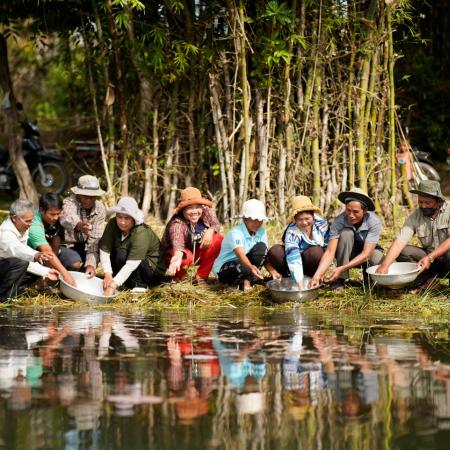
Fish accounts for a major part of the Cambodian diet. However, the continued loss of healthy habitats is causing shortages of freshwater fish supplies, including in Ms. Seng Han’s village in Kampong Thom province. Improved Community Fish Refuge (CFR) management is one approach to increase fish production in rice field fishery systems. The Sustainable Aquaculture and Community Fish Refuge Management project (SAFR) provided technical support to improve the condition of these natural resources and in turn increased fish productivity for the local communities.
»Twenty years ago, there was plenty of fish in our canals, rice fields, ponds, and lakes; we had more than enough fish to eat. But these days fish are scarce«, said Ms. Seng Han.
In 2021, Ms. Han was elected as one of the CFR’s management committee members. She works actively with the other nine members, who have a variety of roles such as president, outreach coordinator, treasurer, etc. After one year of hard work, Ms. Han and her team’s efforts have produced tangible, positive results as fish density and catch in the CFR’s rice field system have steadily increased.
»This year our fisherfolks catch more fish than in past years, so we have more fish for our household consumption …« said Ms. Seng Han.
Ms. Han revealed that she works hard to educate and convince her fellow villagers to better understand the concept of CFR’s and CFR management and how this system can directly benefit her community.
»Mobilizing community resources is not that easy when people do not understand how the CFR benefits them, but I want to see people in my community, especially our children, have enough fish to eat, so I don’t give up«, said Ms. Seng Han.
The project’s ongoing biological monitoring surveys indicate that from March to September 2021, fish biomass has increased by 12 %, while the catch has increased from 0.25 kg to 6 kg per household per week. The CFR that Ms. Han works for benefits 1,133 households and directly contributes to increasing the food security of her community.
Ms. Han is cautiously optimistic given the positive results to date. However, she recognizes that more work is needed to ensure a truly sustainable, long-term outcome as more challenges like maintaining good water quality in the dry season, enhancing flood-resistence through healthy trees and aquatic plants and adapting their community plans inevitably lay ahead.
